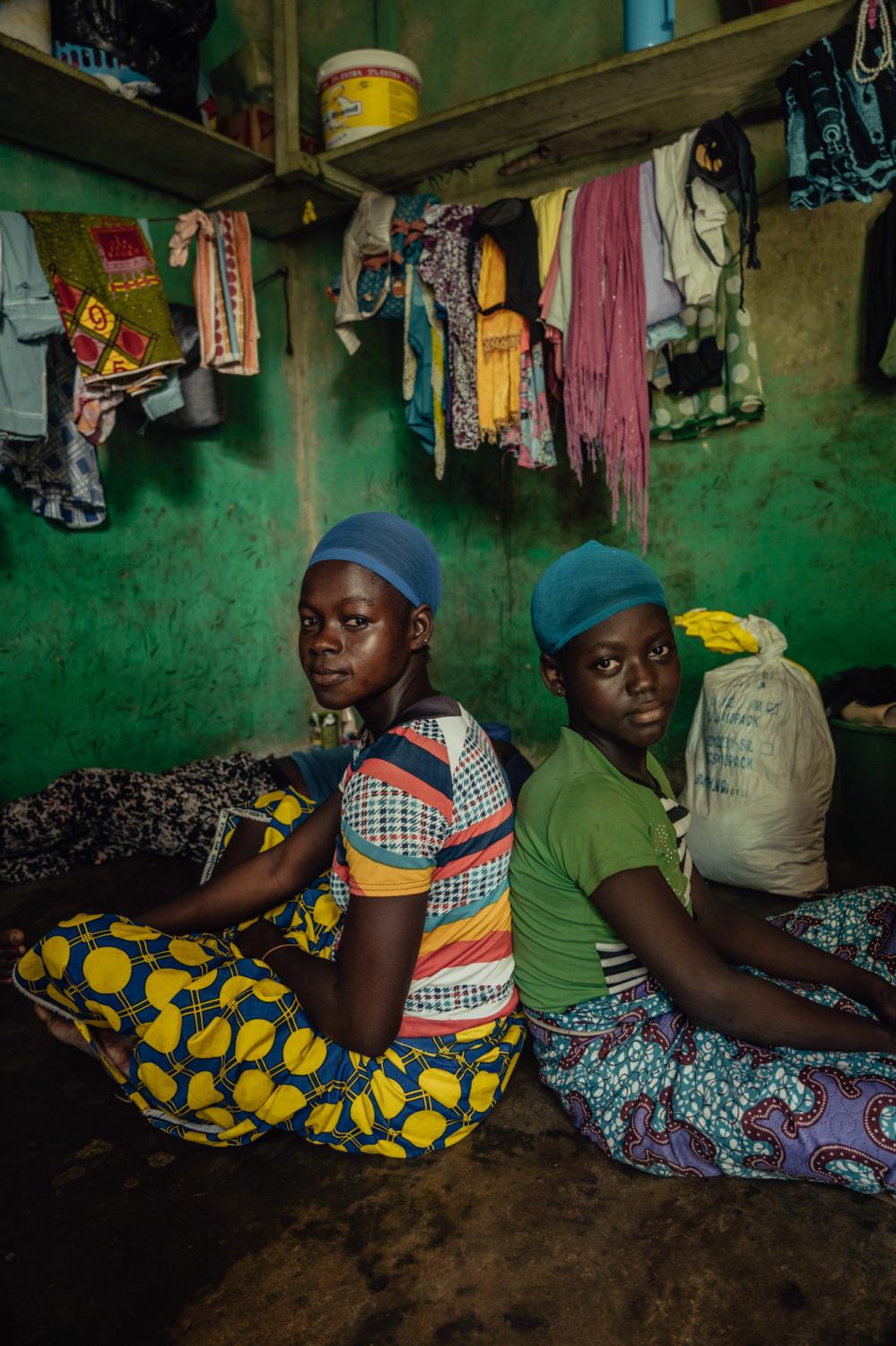
Rahina’s younger sister Rafia (11) joined her a year ago to work as a...
READ ON
Rahina’s younger sister Rafia (11) joined her a year ago to work as a kayayo at the market, they both live in the Agbogbloshie slum. Though Rahina understands the dangers the slum poses to them she doesn’t have a choice, it’s the cheapest place to rent in Accra located very close to the market where she works. Rahina is grateful for her younger sister joining her, they eat and spend time together outside of work in the market.
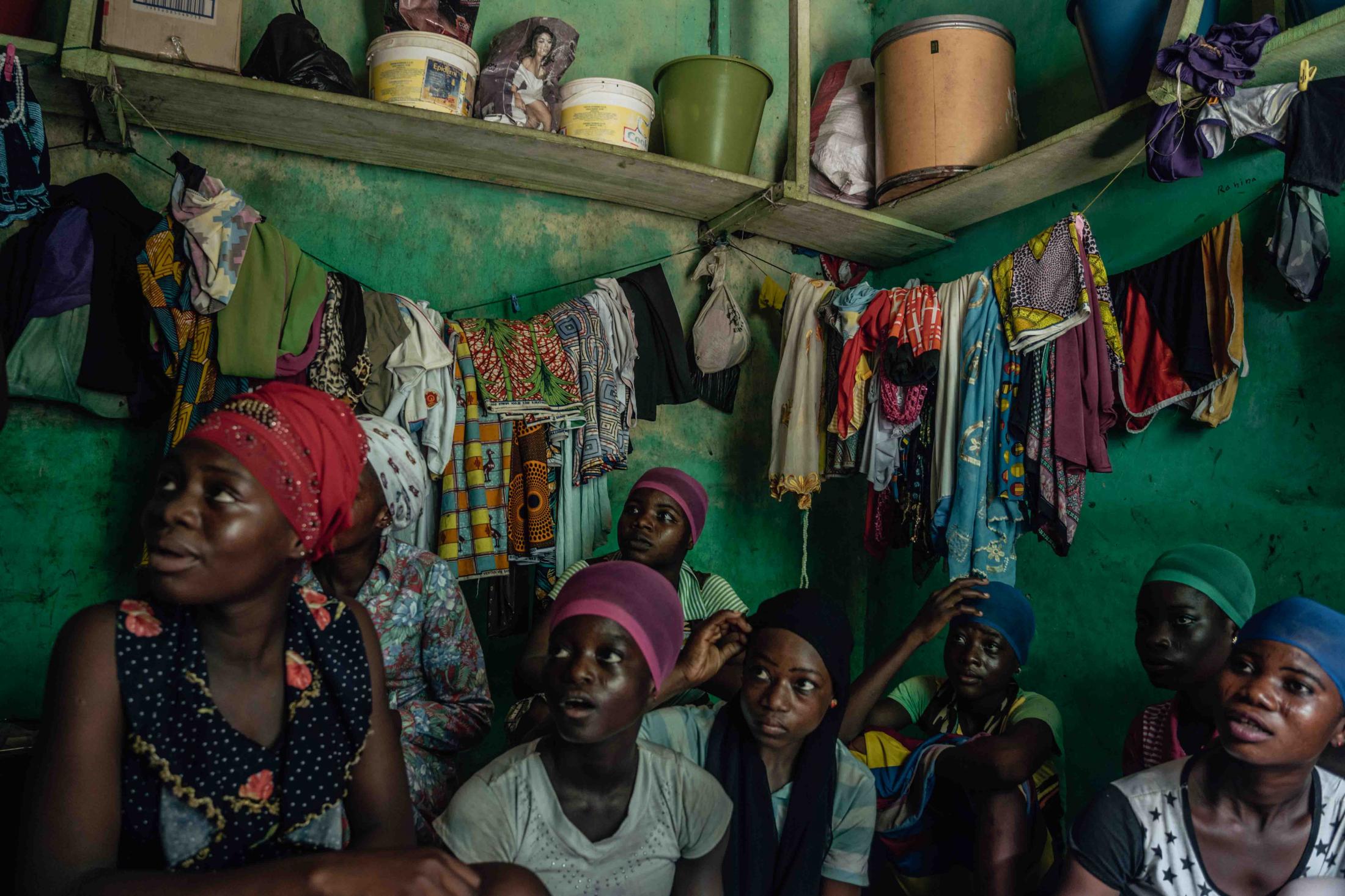
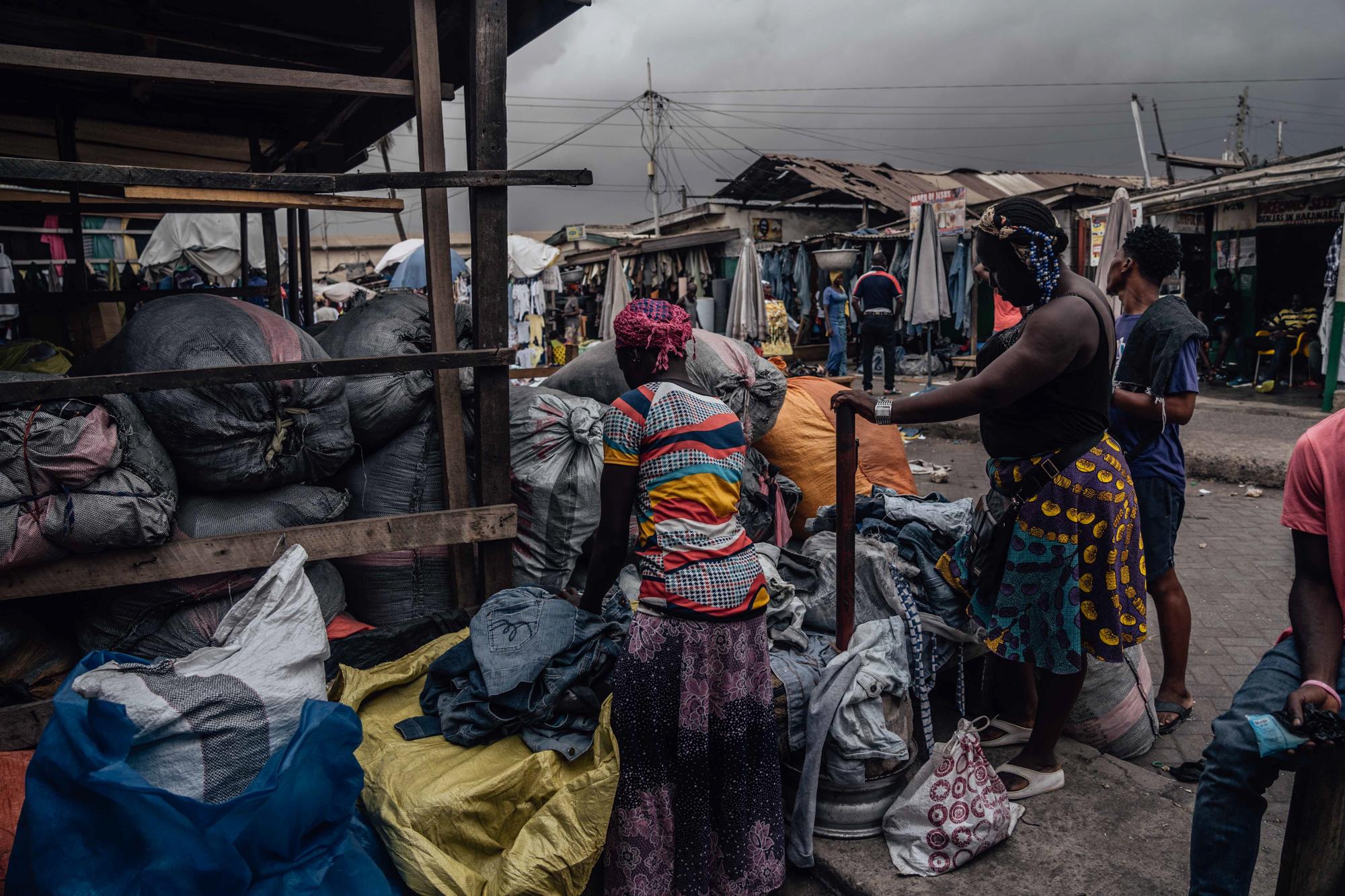
Rahina works as a kayayo (female head porter) at the biggest second hand...
READ ON
Rahina works as a kayayo (female head porter) at the biggest second hand market Kantamanto in Accra. It is estimated there are more than 160,000 of kayayei in Accra.
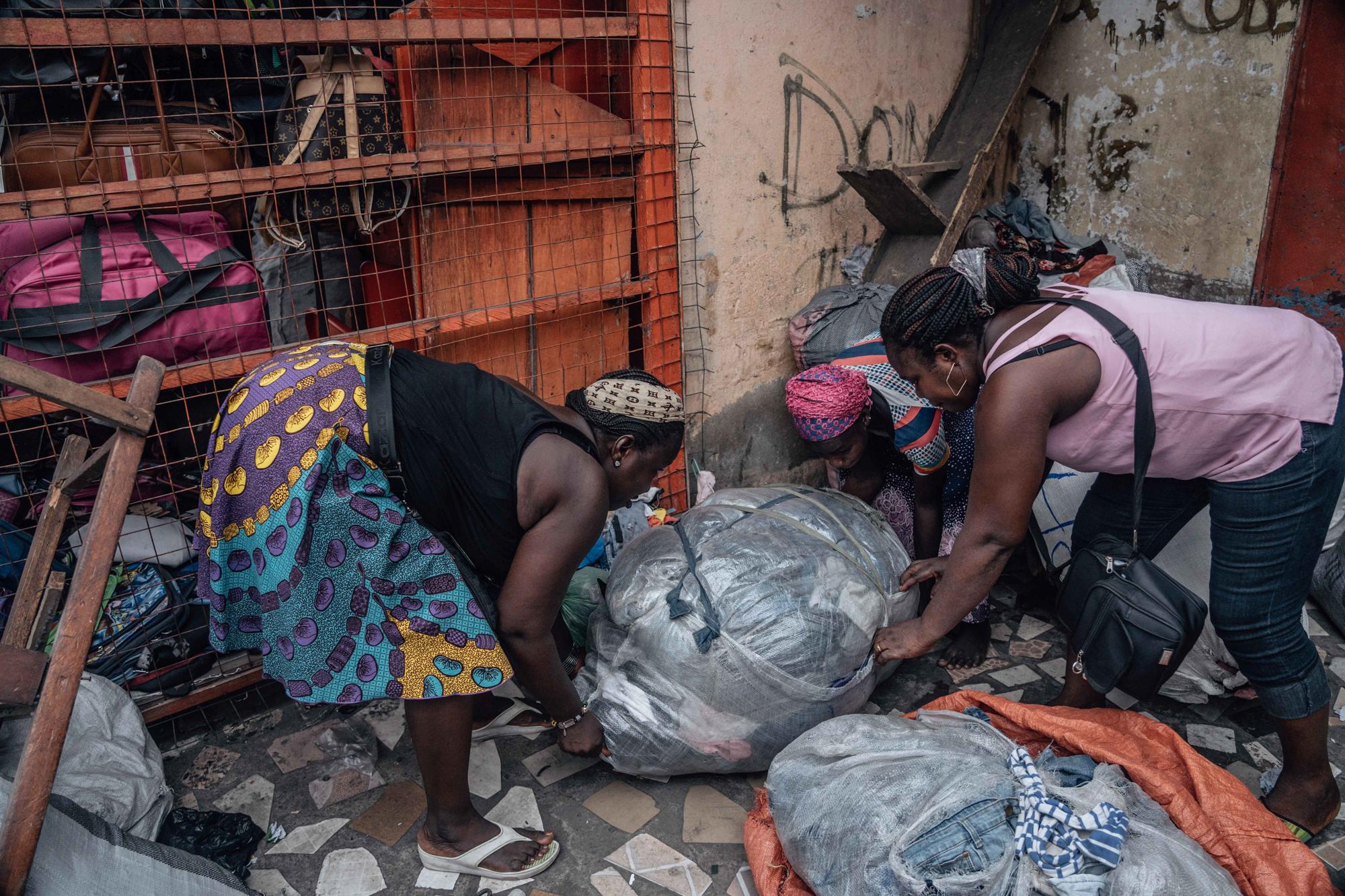
Rahina is getting help to lift a large load that she carries on her head to...
READ ON
Rahina is getting help to lift a large load that she carries on her head to deliver to the customer.
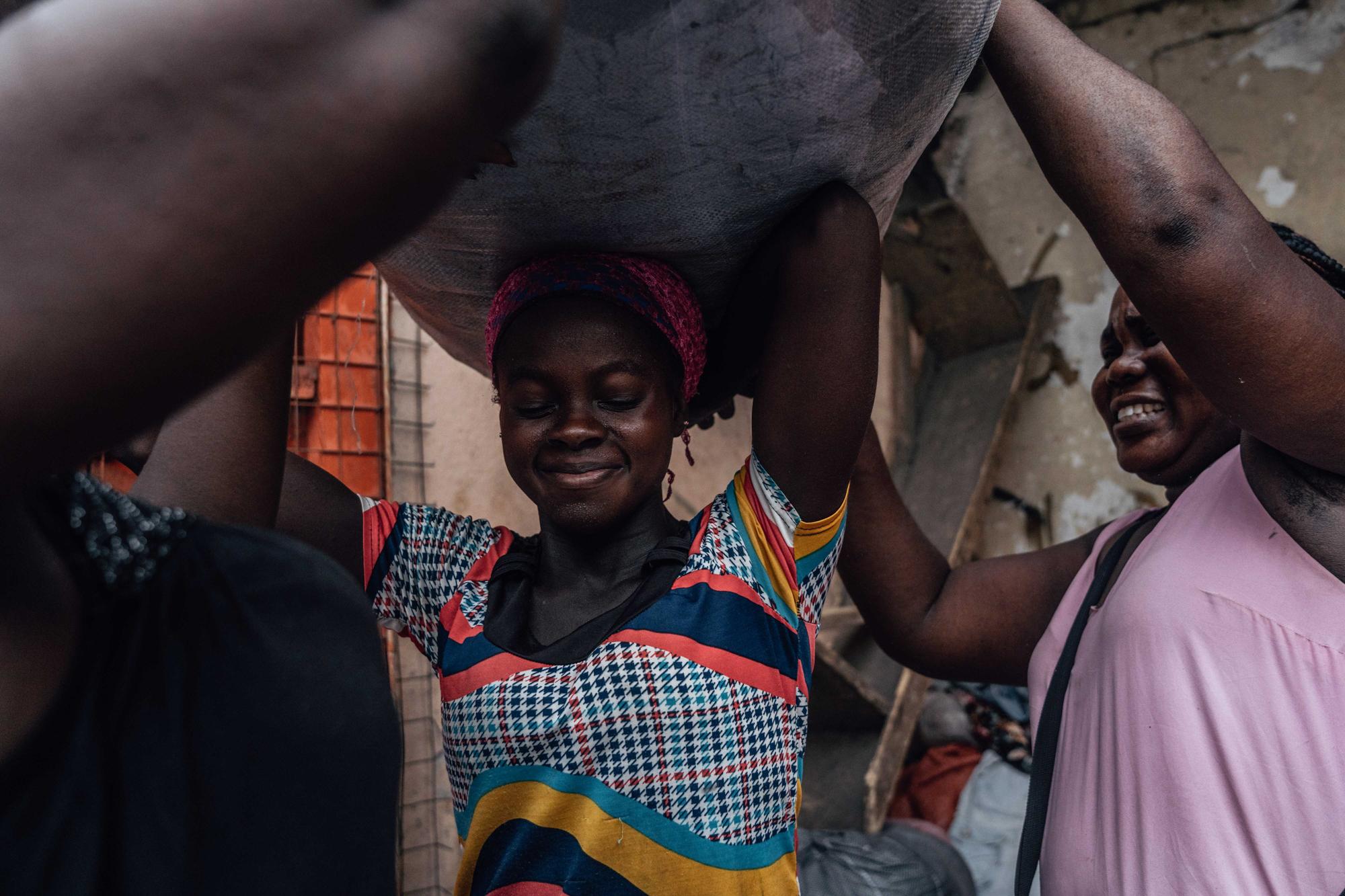
Some loads weight more than 120 pounds and the kayayei need to do a lot of trips a day to survive.
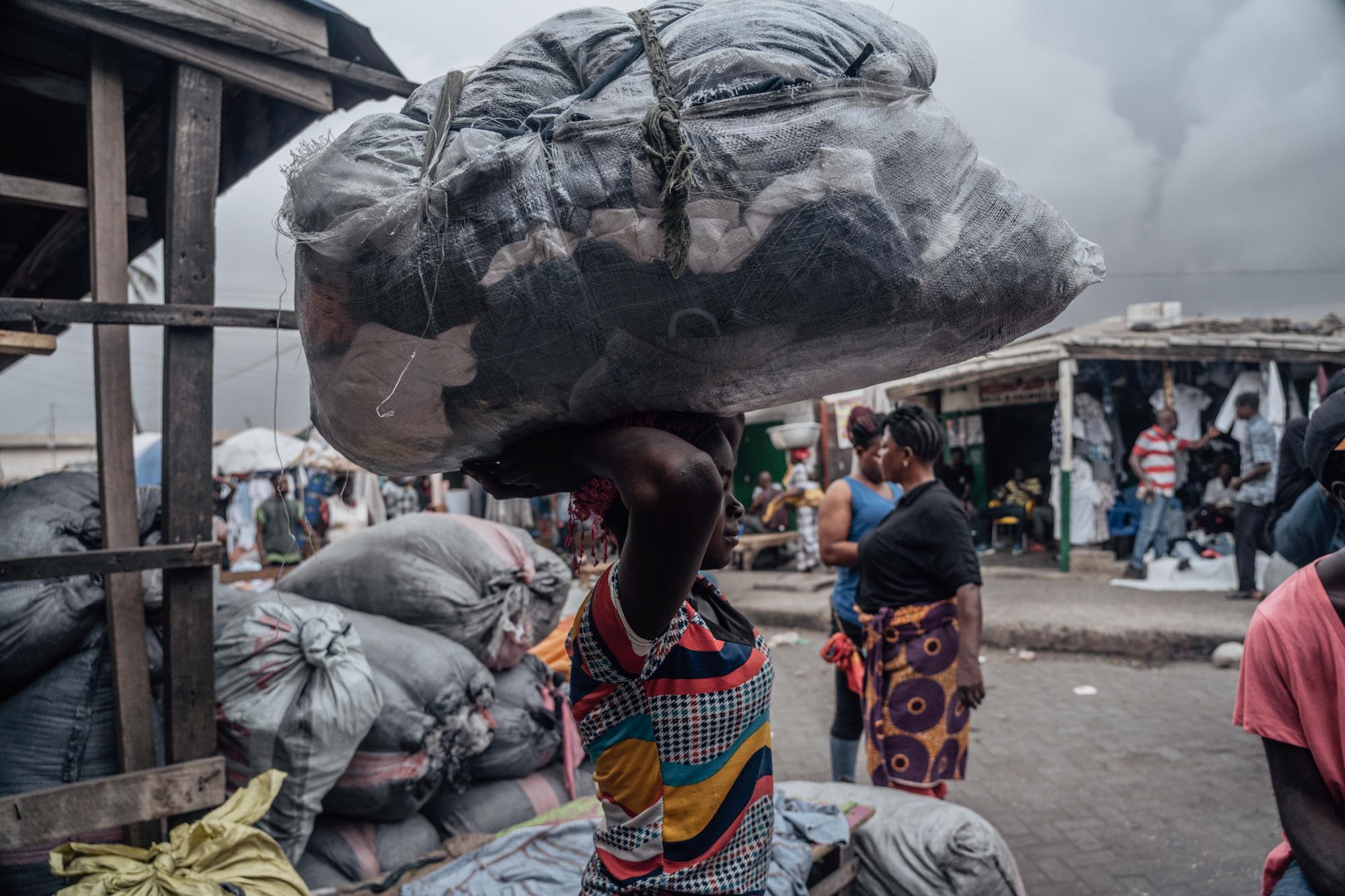
Despite the back breaking labor and hardships she faces every day, she...
READ ON
Despite the back breaking labor and hardships she faces every day, she continues working in Accra to send money to her family back in the North.
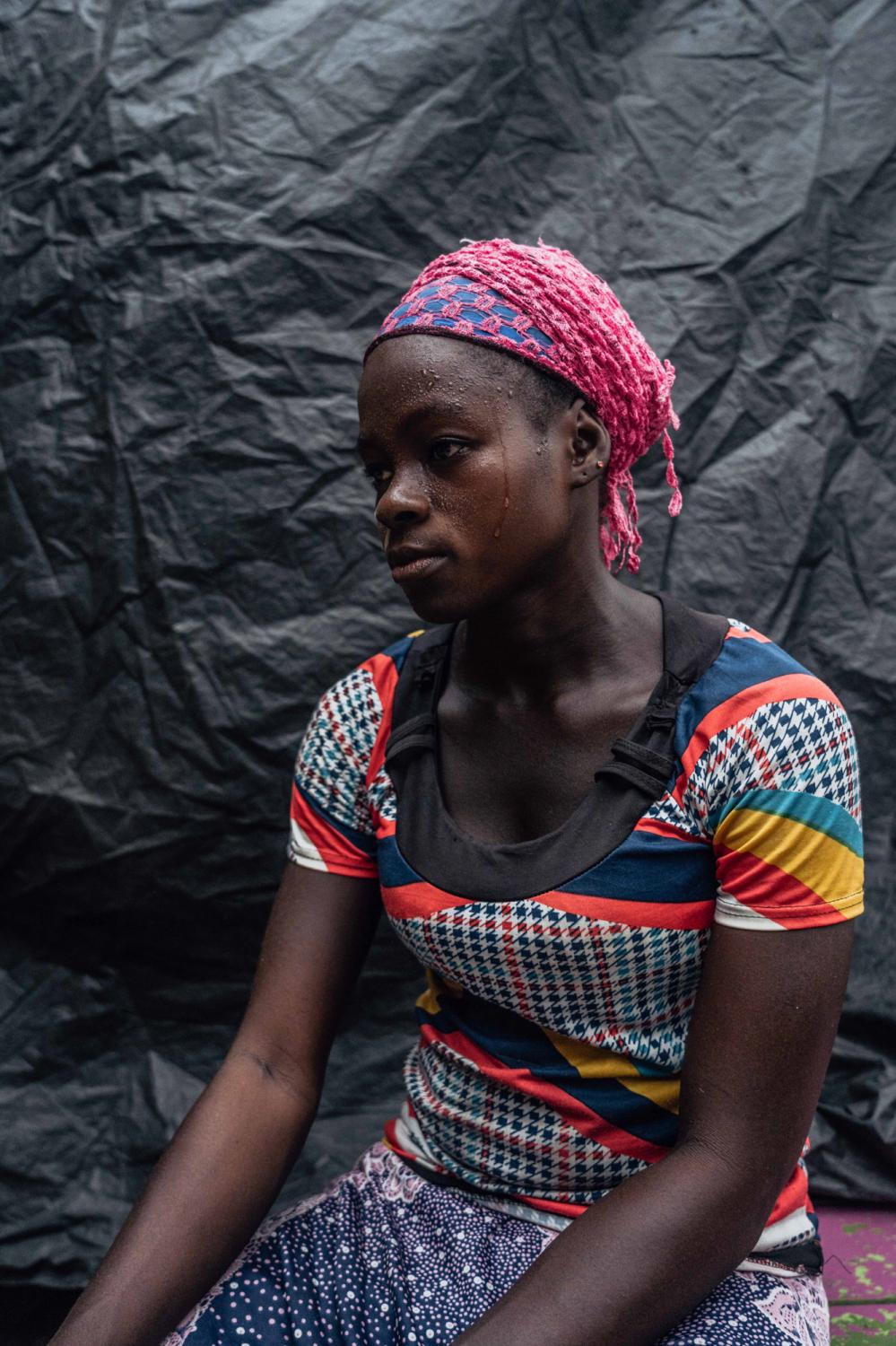
Rahina is having a rest after carrying a heavy load in the sweltering heat...
READ ON
Rahina is having a rest after carrying a heavy load in the sweltering heat
throughout Accra’s busy market for as little as few cedis a day (less than a dollar).
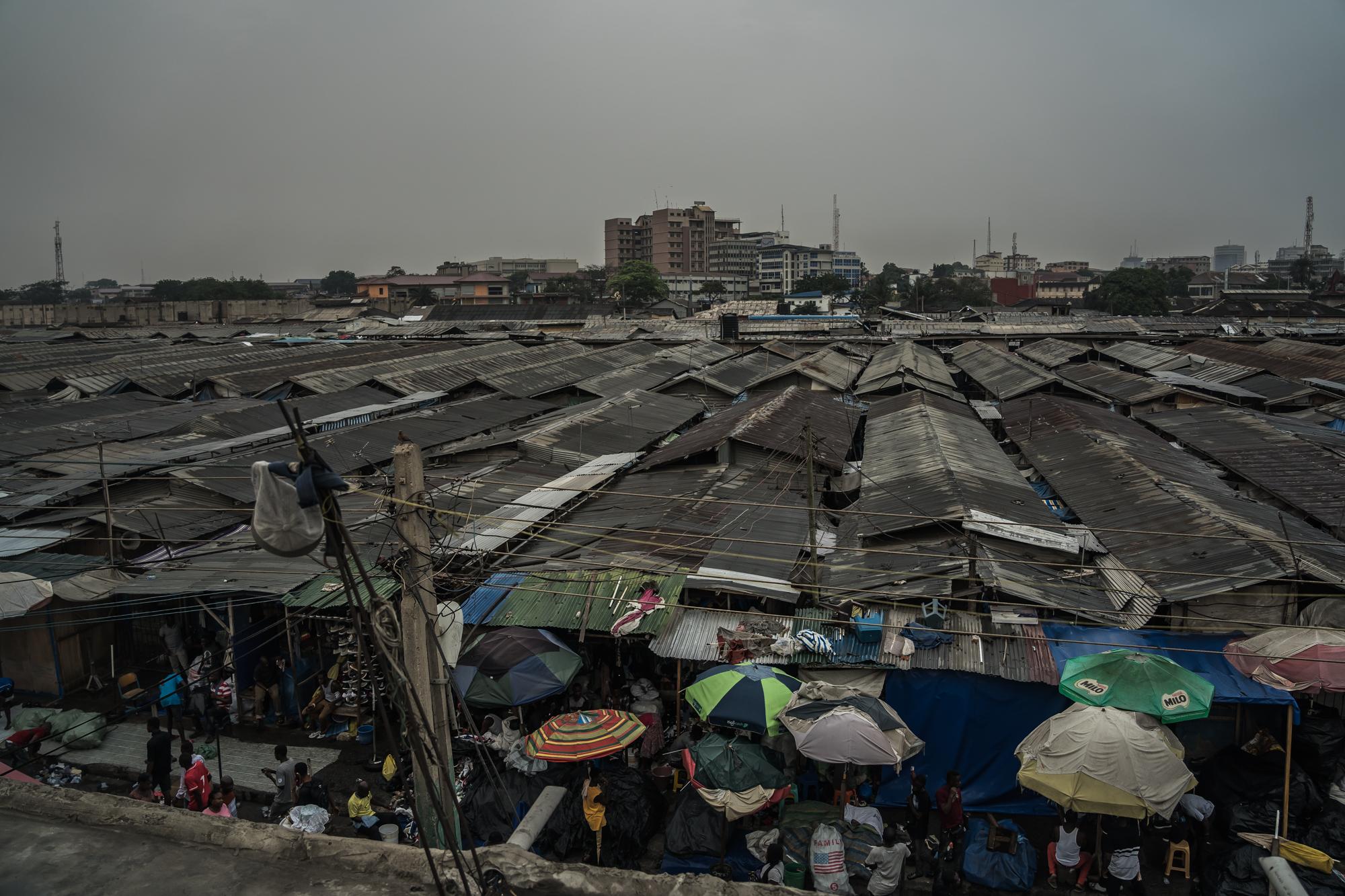
The Kantamanto Market, situated in the central business district of Accra, is...
READ ON
The Kantamanto Market, situated in the central business district of Accra, is Ghana’s largest second-hand clothes market with around 30,000 traders.
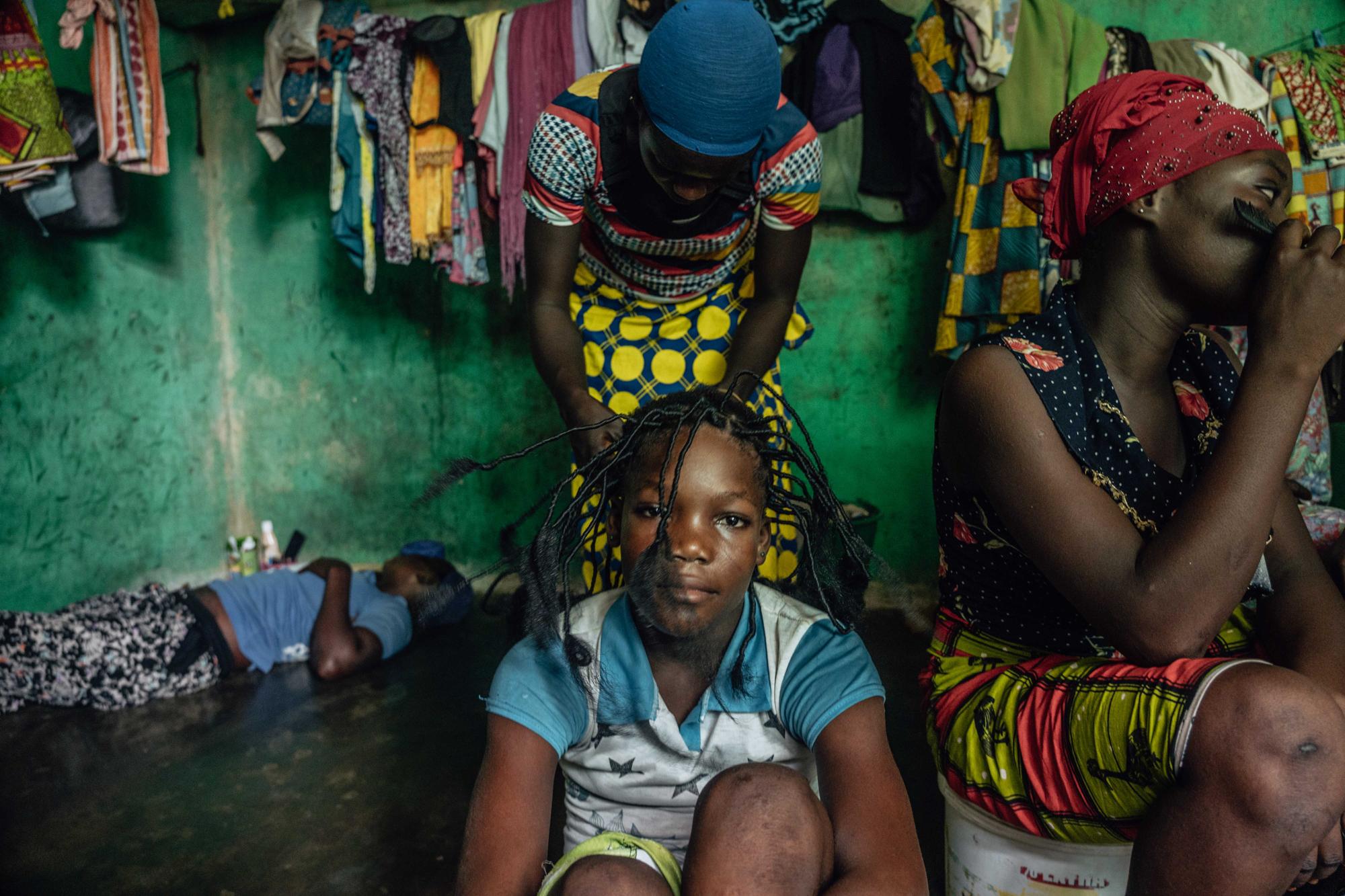
Rahina braids her roommate’s hair on Sunday afternoon before the evening prayer.
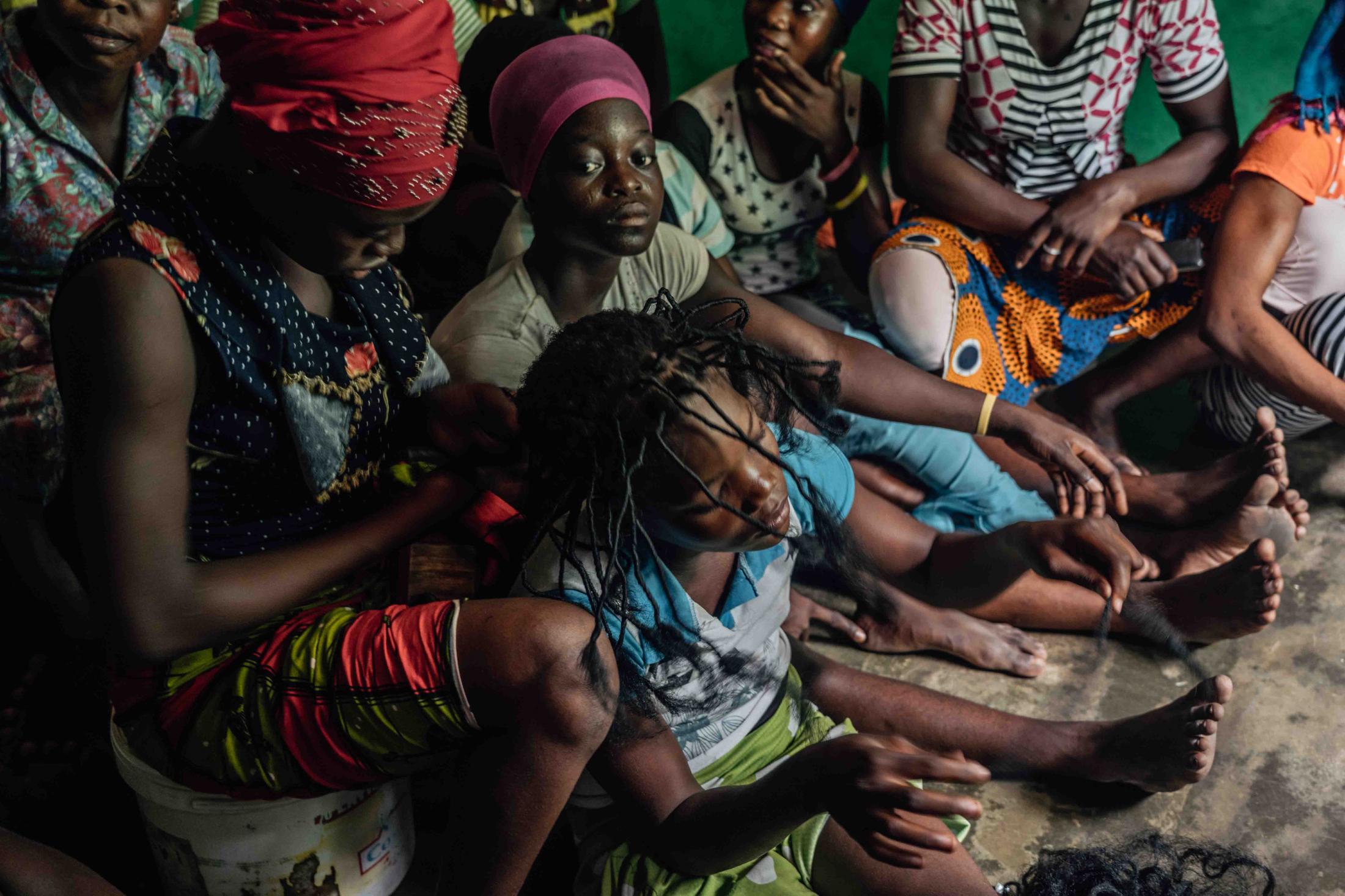
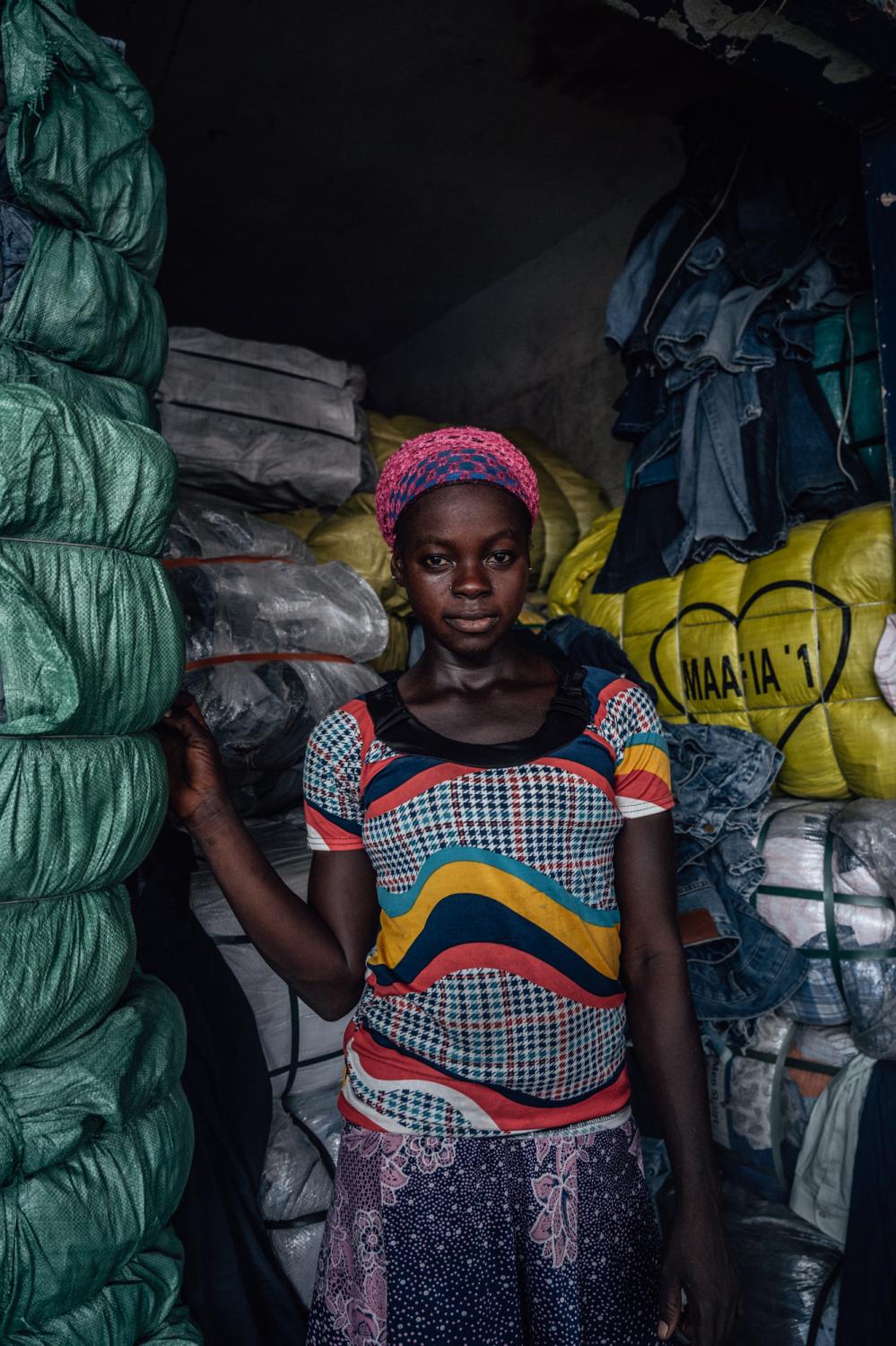
Rahina is standing by the clothes bales that weight a minimum of 120 pounds....
READ ON
Rahina is standing by the clothes bales that weight a minimum of 120 pounds. Carrying these clothing bales on her head can be extremely dangerous, but she needs to carry many of them a day to make a living.
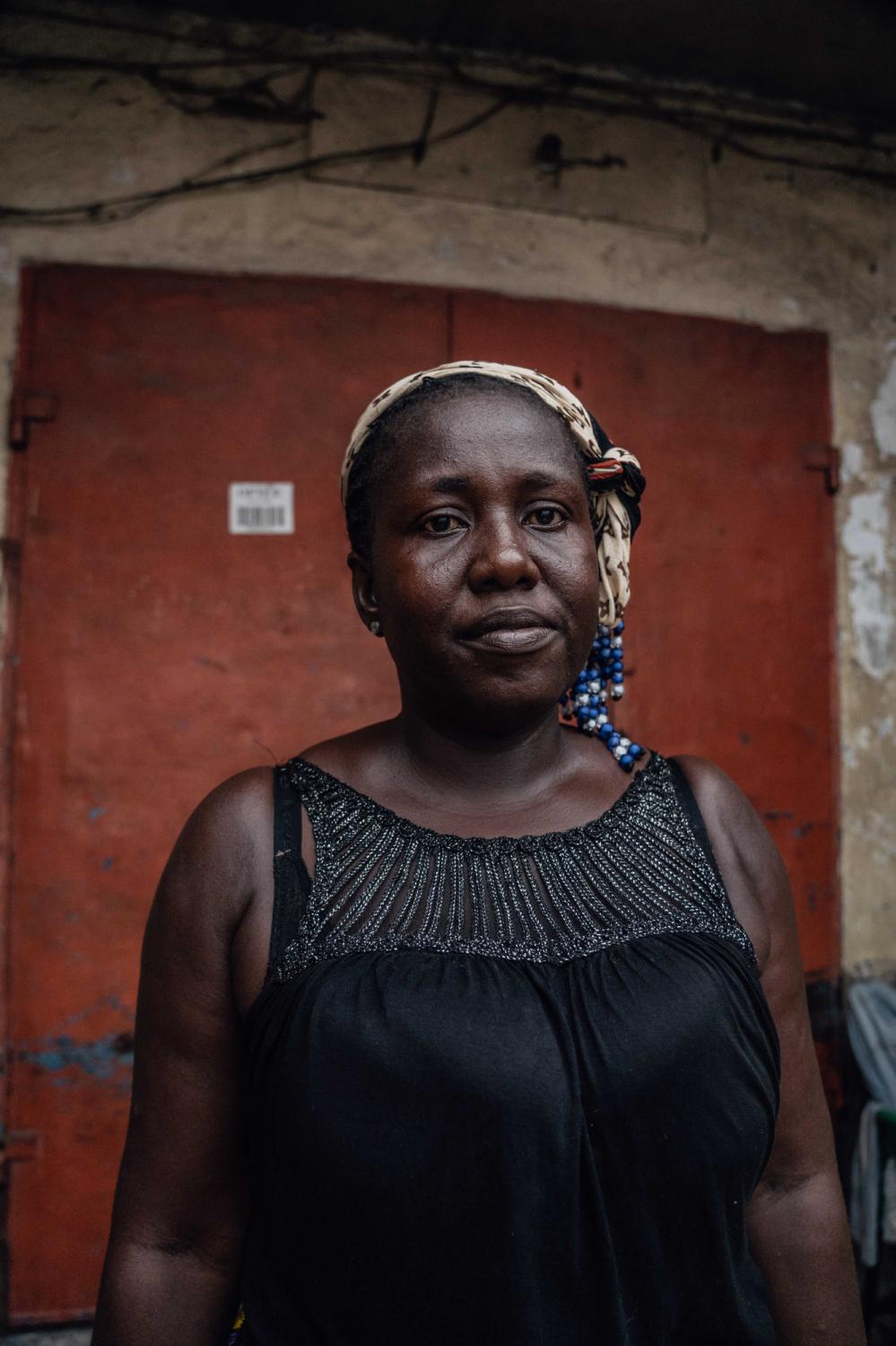
Vida Apong(40) have been working at the Kantamanto market for more than 10...
READ ON
Vida Apong(40) have been working at the Kantamanto market for more than 10 years selling second hand jeans. She has witnessed the increase of teenage girls coming from the Northern regions. Vida had been Rahina’s madam for almost 2 years. She connects Rahina to many customers in the market and allows her to open and close her business for some small money. “I understand the struggle of the kayayei girls, its not easy for them. I like Rahina, she is a hard working girl.”
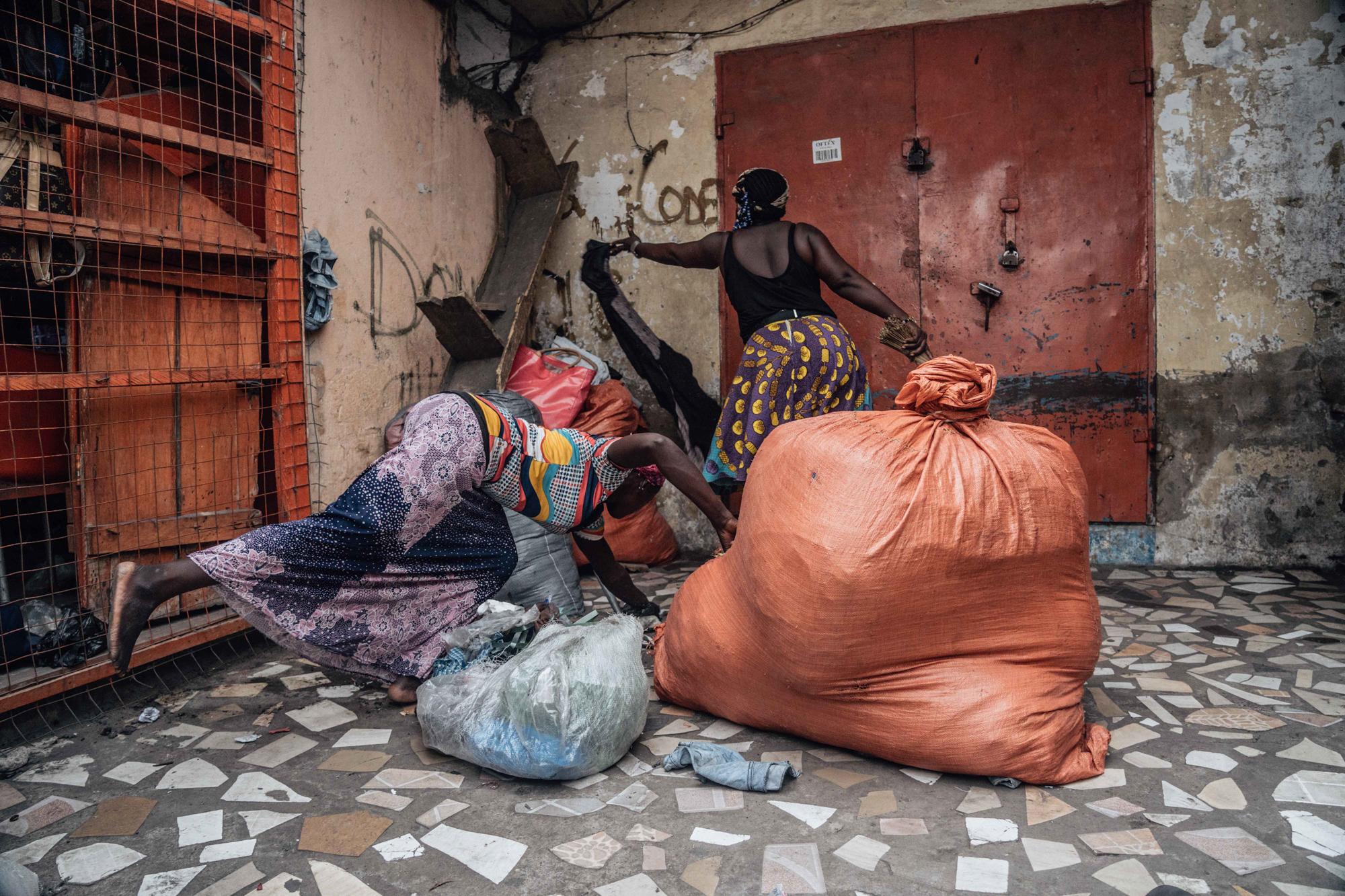
It’s the end of the market day and Rahina is helping her madam to close...
READ ON
It’s the end of the market day and Rahina is helping her madam to close the shop just to return back as early as 5am.
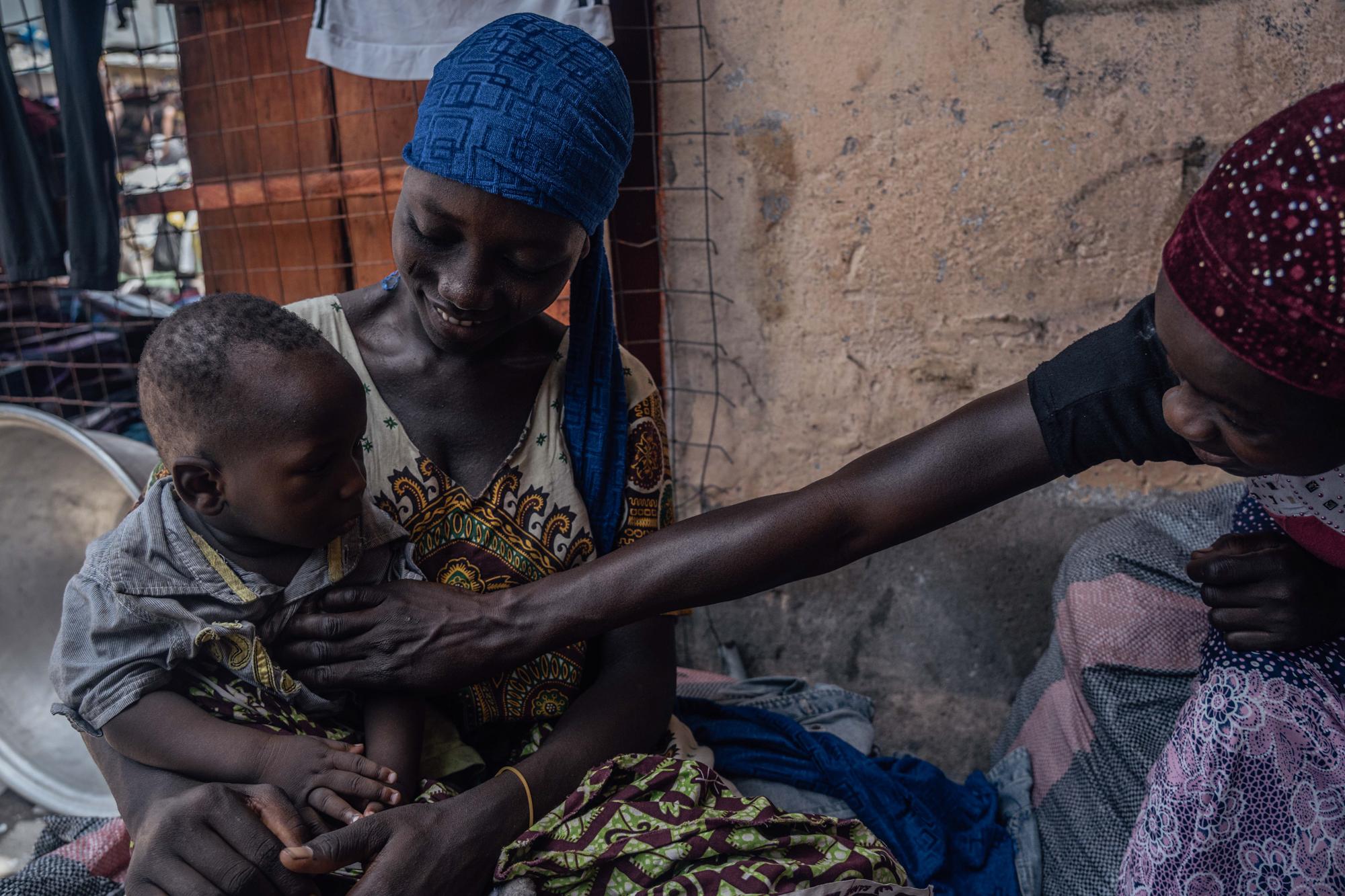
Rahina plays with 1-year-old Akim, Asana’s son. The girls came from the...
READ ON
Rahina plays with 1-year-old Akim, Asana’s son. The girls came from the neighboring village up in the North but met only in Accra's busiest market and bonded straight away.
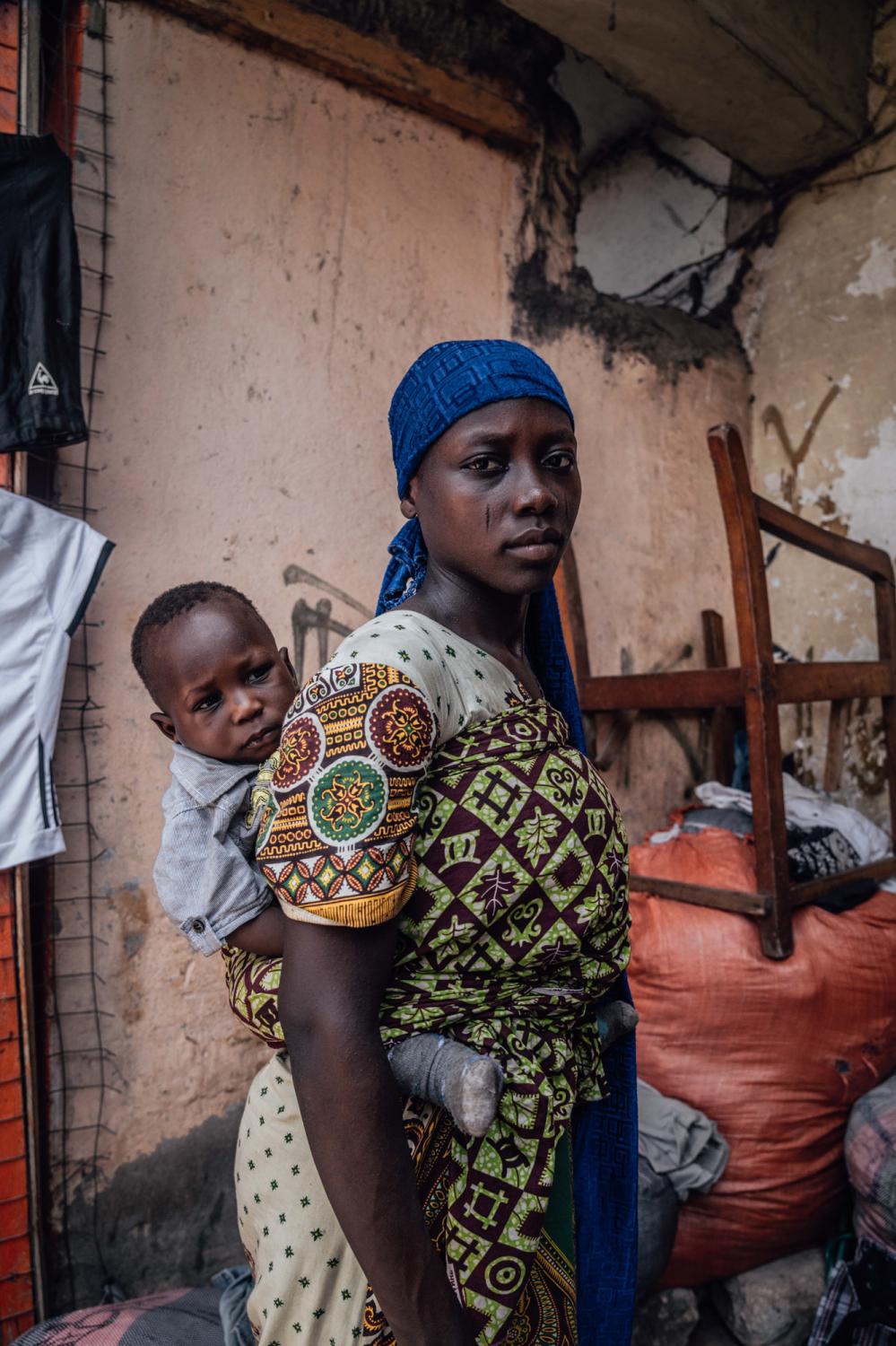
Asana (25) has been working as kayayo in Accra for almost 10 years. She has...
READ ON
Asana (25) has been working as kayayo in Accra for almost 10 years. She has also migrated from the North to Accra in search of better life. Asana doesn’t have anyone to look after her 1-year-old son so she carries him behind her back. In between jobs Asana stop to feed and play with little Akim.
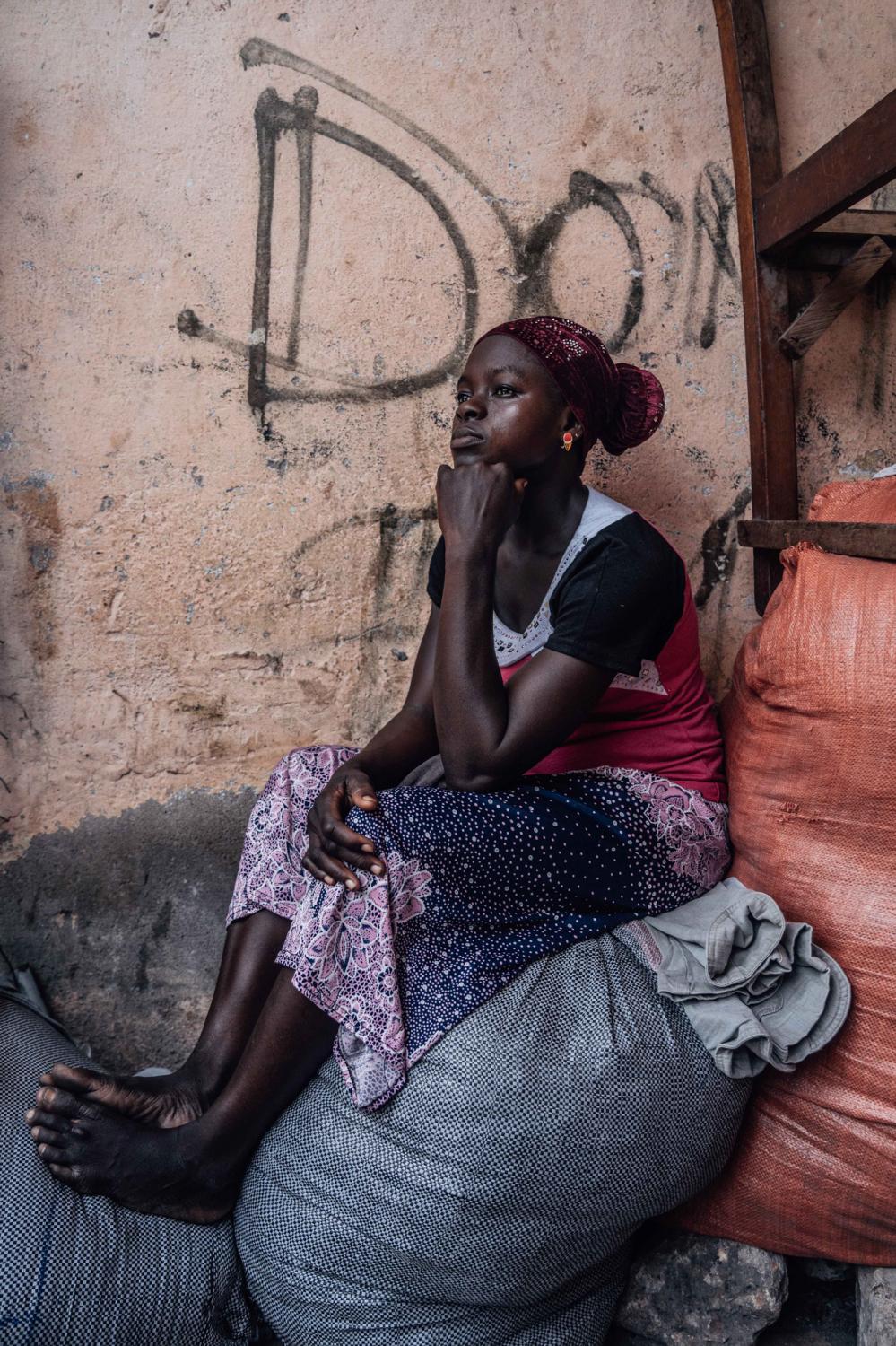
Rahina dreams about becoming a fashion designer in her hometown near Tamale,...
READ ON
Rahina dreams about becoming a fashion designer in her hometown near Tamale, Ghana. She wants to earn enough money and leave Accra for good. “ I don’t like Accra, its too noisy and dirty, I miss my hometown.”
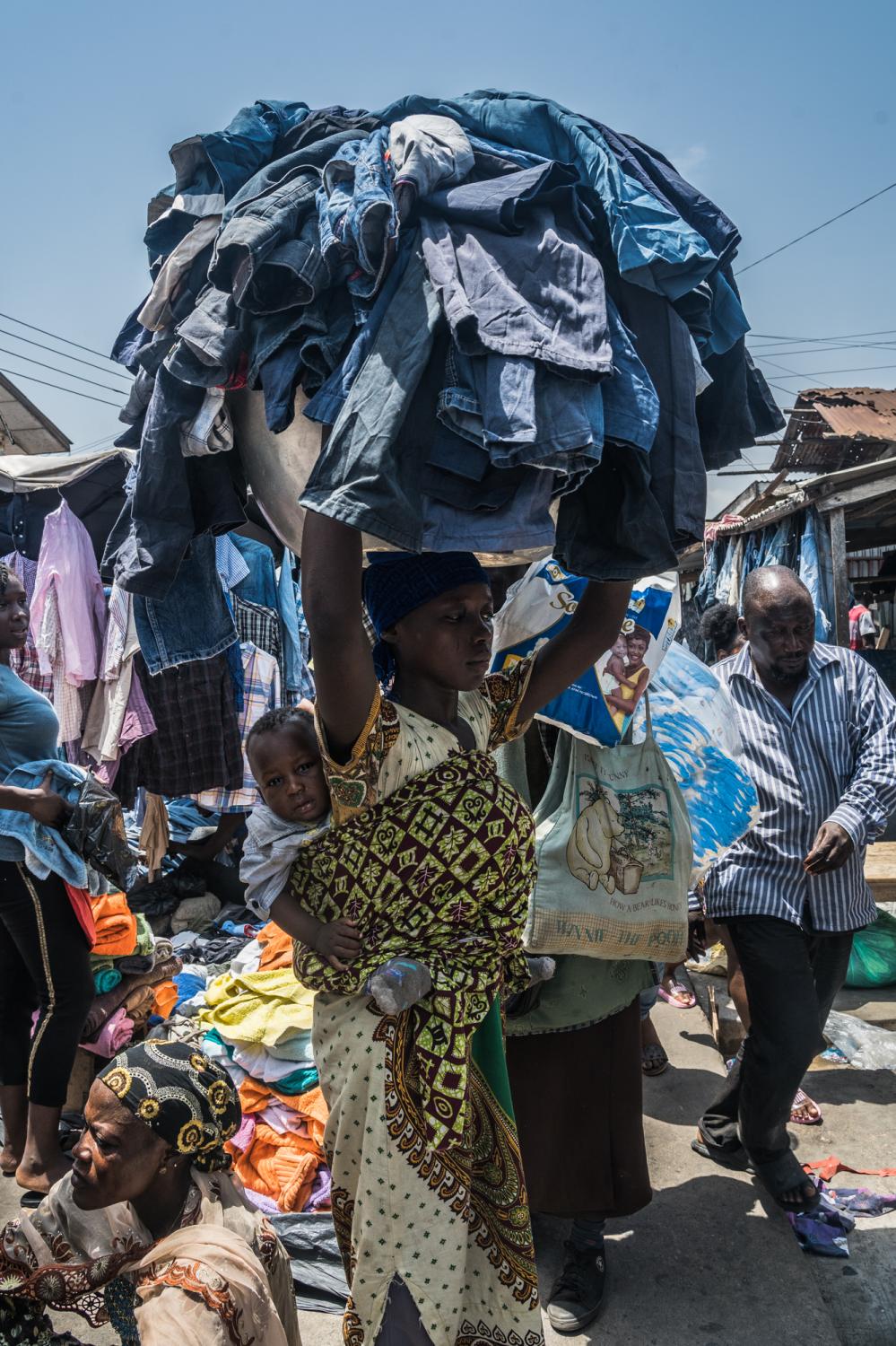
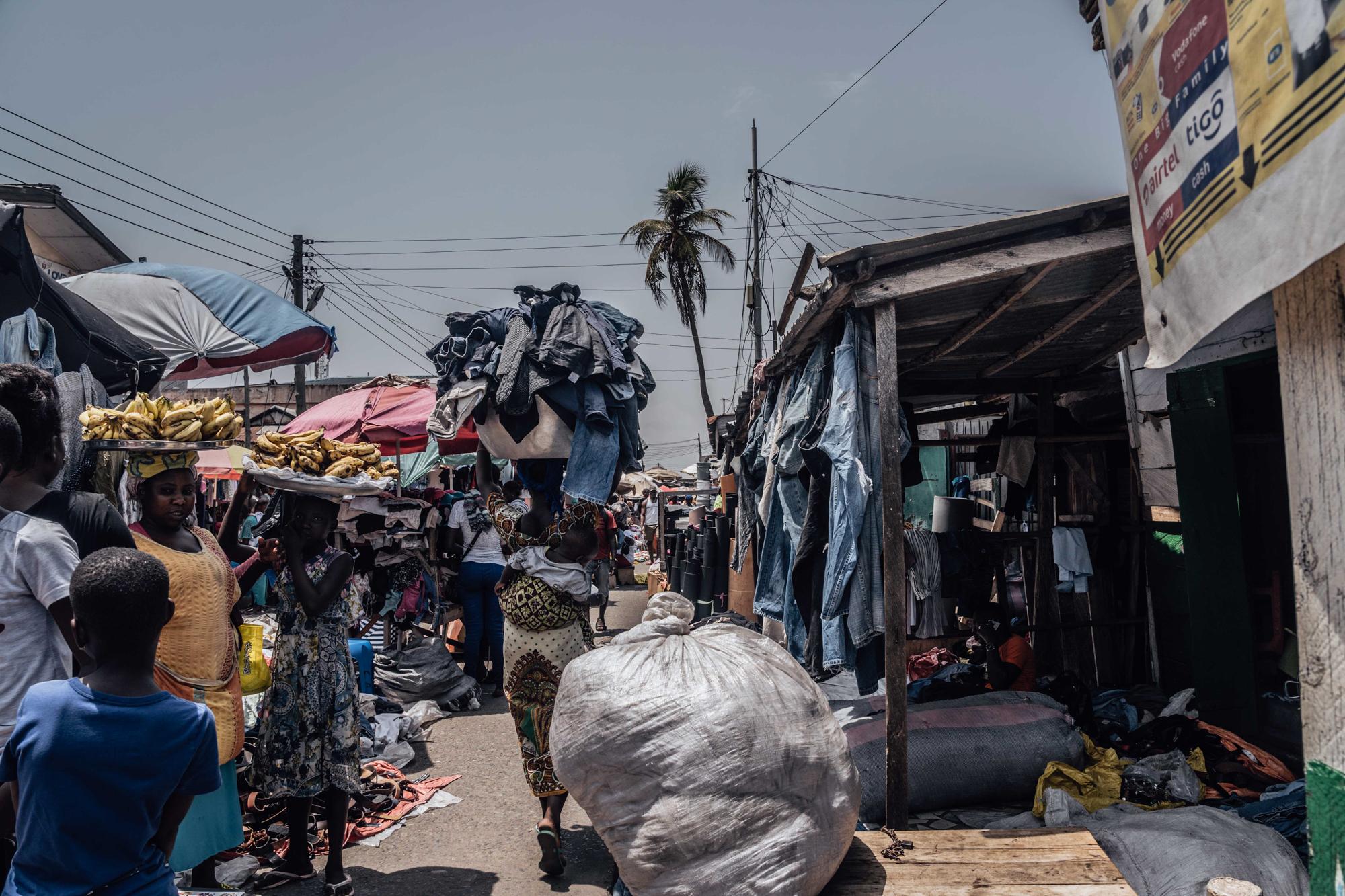
Asana carries a load with her son wrapped at the back in the sweltering heat...
READ ON
Asana carries a load with her son wrapped at the back in the sweltering heat of Accra’s market.
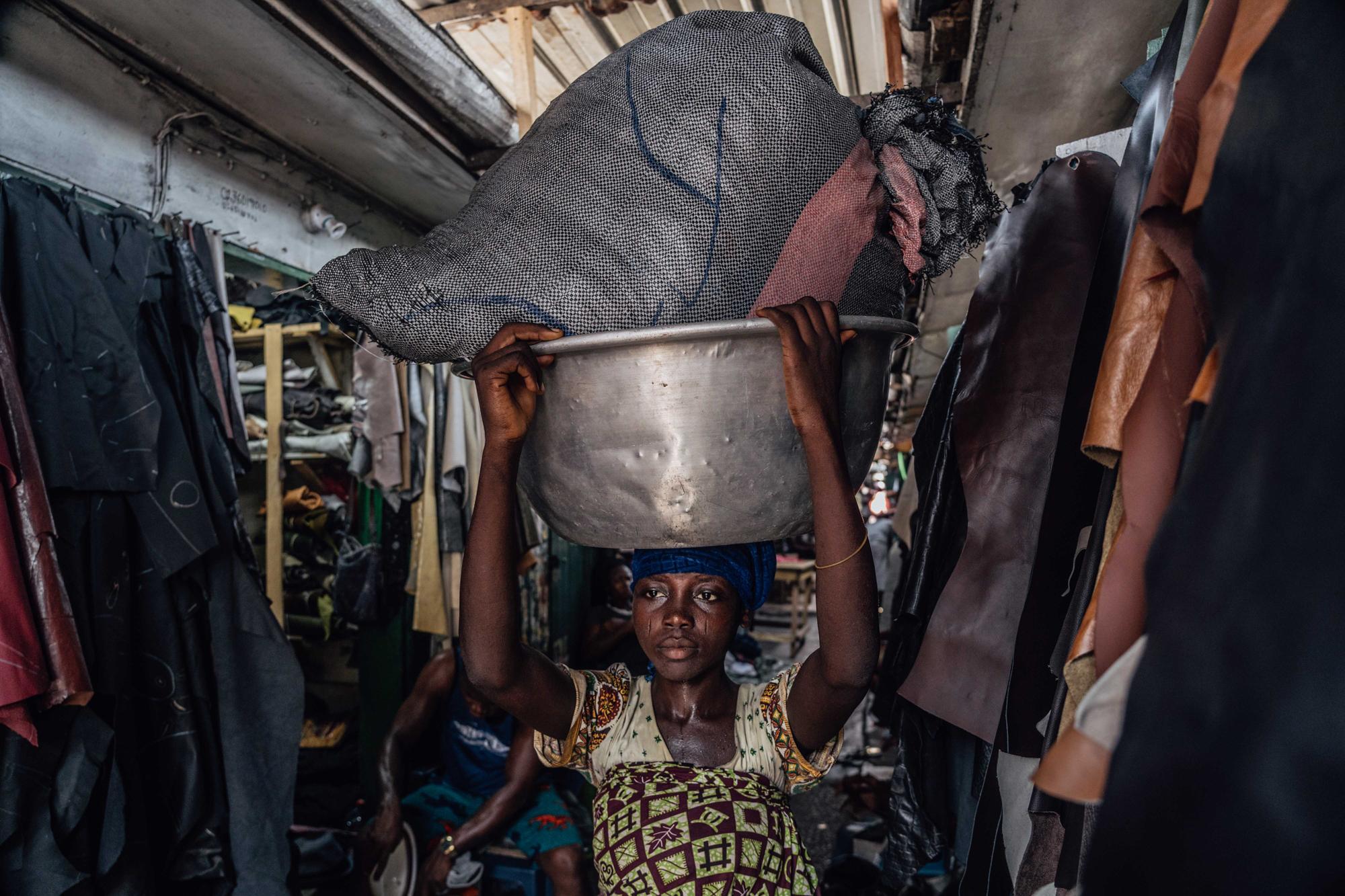
Asana doesn’t receive any help or child care support from the...
READ ON
Asana doesn’t receive any help or child care support from the government. She is strong-spirited and is determined to create a better future for her son Akim.
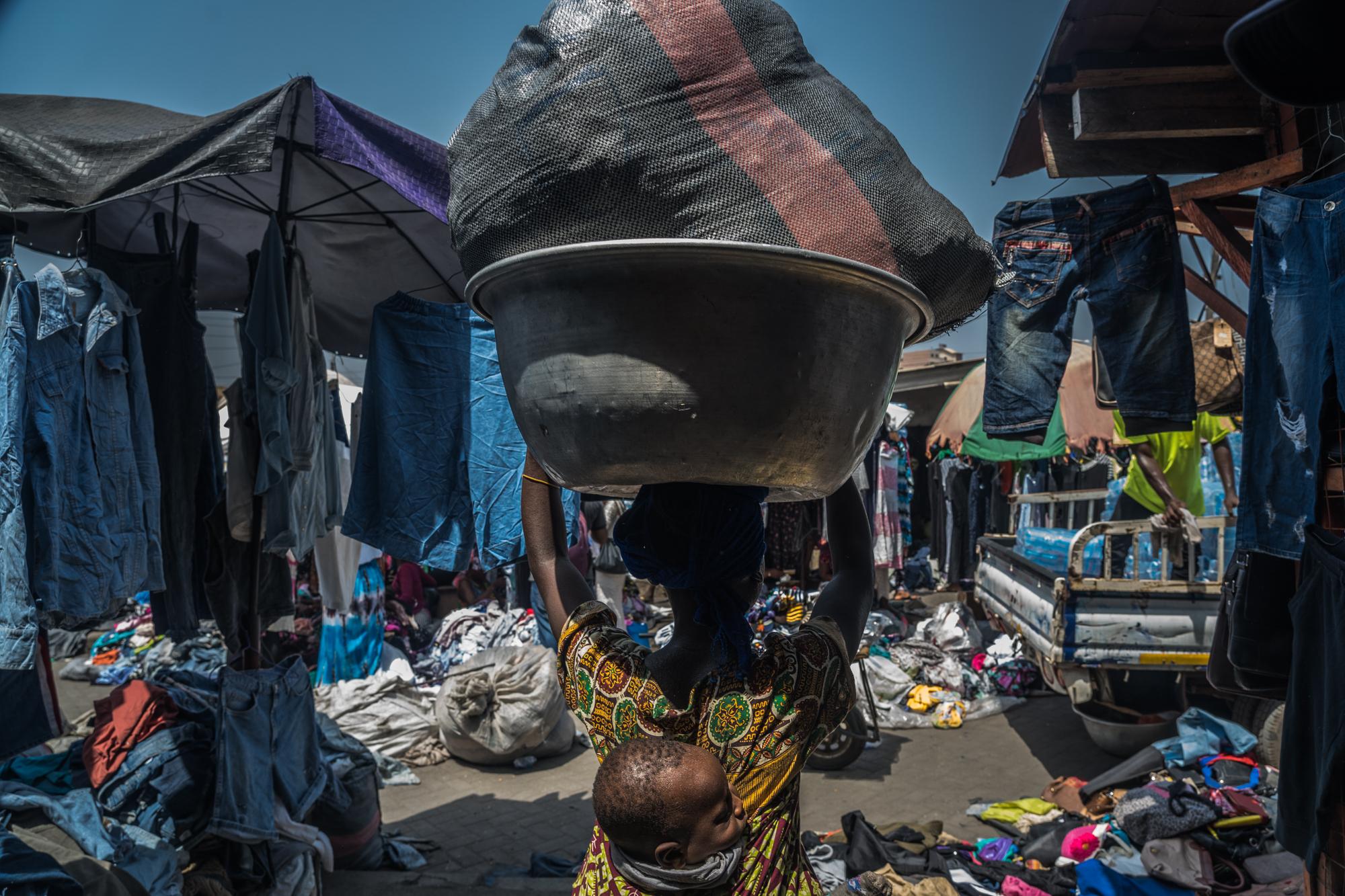
Many of these young women have no formal education and on their arrival to Accra often end up working as kayayei (female head porters). For long hours in the sweltering heat, the kayayei carry goods on their heads throughout Accra’s busy markets for as little as few cedis a day (less than a dollar). Some loads weight more than 120 pounds and the kayayie need to do a lot of trips a day to survive.
It is estimated there are more than 160,000 of kayayei in Accra.
Rahina came to Accra from the Northern Region almost 5 years ago, as there was no work for her in the North. Despite the back breaking labor and hardships she faces every day, she continues working in Accra to send money to her family back in the North. Many kayayei women have no family in the city, and without a place to stay they end up sleeping at night in the market. That makes them extremely vulnerable to gender- based violence, including rape and its potential consequences, such as unwanted pregnancy and unsafe abortion.
Rahina used to sleep in the market but later moved to Accra’s largest slum Agbogbloshie to share one room with another 10 kayayei girls. Agbogbloshie, sometimes referred by locals as “Sodom and Gomorrah” is one of the world’s largest electronic waste burning sites and one of the most toxic places in the world. Residents of Agbogbloshie face serious health threats from breathing in toxic fumes from burning e-waste. The slum is also a home to armed robbers, prostitutes and drug dealers where young women
can become victims of sexual assaults.
Rahina’s younger sister Rahia (11) joined her a year ago to work as a kayayei at the market, they both live in the Agbogbloshie slum. Though Rahina understands the dangers the slum poses to them she doesn’t have a choice, it’s the cheapest place to rent in Accra located very close to the market where she works. Rahina is grateful for her younger sister joining her, they eat and spend time together outside of work in the market.
Rahina’s story resonates with thousands of of vulnerable young women who migrate from the Northern regions to Accra in search of better life just to face exploitation, sexual violence, and without any support from the government they end up becoming slaves of the system.



















